How To Use A Learning And Development Maturity Model?
How strong is your organization on the learning and development front? Answering that question is not super simple. Many factors are at play, and further human bias makes us interpret things differently. For instance, a team emphasizing learning for the present goals might not see much value in developing a future-ready learning plan. But another team would! The learning and development function itself has to grow through all of these stages to support your organization’s ambitions. The learning and development maturity model helps us add clarity to this picture.What is a Learning Maturity Model?
Learning maturity is about ensuring that your corporate learning efforts align with talent management and business goals. It is not just about offering training programs. It is also about building a culture that appreciates ongoing learning and helps employees grow. As organizations improve at this, they move from just giving training to building a learning environment. This new approach supports employee development, boosts skills, and improves business performance. Learning is more connected to other HR activities like performance management and talent development, creating a complete way to develop the workforce.A learning maturity model is a tool that shows different stages of growth in an organization’s learning and development (L&D) function. It acts like a roadmap, showing how L&D can change from being basic and reactive to becoming a key part of the business. Each maturity level has its traits, skills, and methods linked to corporate learning. This model lets you check your current L&D practices, resources, and technology against set standards to prepare better.
Learning Maturity is incredibly connected to better business outcomes, as Deloitte has defined that organizations with higher learning maturity are three times more likely to:- achieve financial targets
- anticipate change and respond actively
- grow talent to meet current and future needs
- innovate across products and services
- retain high performers
Key Components of a Learning and Development Maturity Model
The building blocks of a solid learning and development maturity model include: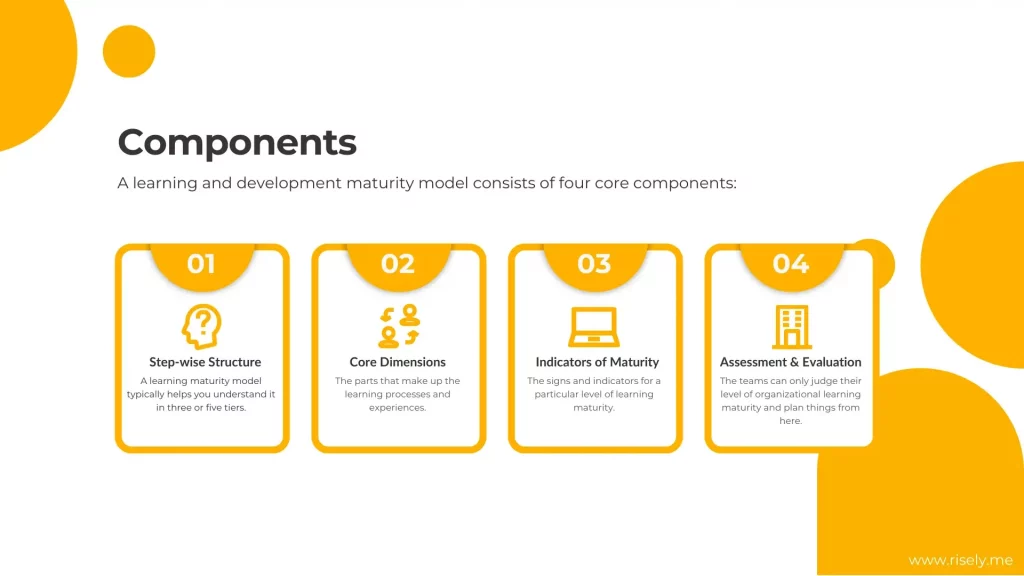
- A step-wise structure: L&D maturity models feature different levels or stages that signify the level of consolidation of the L&D function with the business side of things. A learning maturity model typically helps you understand it in three to five tiers.
- Core dimensions: Every learning and development maturity model revolves around a few core dimensions, such as learning strategy, content and materials, learning environment and culture, alignment with business objectives, processes, and impact.
- Indicators of maturity: Every level of maturity in the model is associated with certain indicators. For example, the presence and sophistication of a formal L&D strategy help us see that the organization is in Stage 4. Conversely, a chalk-and-talk attitude toward learning shows that it’s at a pretty early stage in terms of learning maturity.
- Assessment and evaluation: These twins form the basis of any learning and development maturity model you see working around you. The teams can only judge their level of organizational learning maturity and plan things further based on assessments and constant evaluations.
Assessing Your Organization’s Current L&D Maturity Level
You need to start with an assessment to use an L&D maturity model for growth. This means carefully examining your organization’s learning culture, practices, and resources to determine where you stand in the maturity model. The first assessment uses the maturity model to examine different parts of your learning and development (L&D) processes. Start by checking how clear and detailed your learning strategy is. Is it easy to understand and share, and is it in line with your business goals? Then, look at how you design and deliver your L&D programs. Are they made to meet specific needs in your organization and focus on important skills gaps? Also, check the technology and tools you use for L&D. Do you use an LMS or other digital learning platforms effectively? Next, evaluate how engaged the learners are and how well your programs achieve their goals. This first assessment will show you how skilled your organization is in various L&D areas and point out where you need to improve.What are the Four Stages of L&D Maturity?
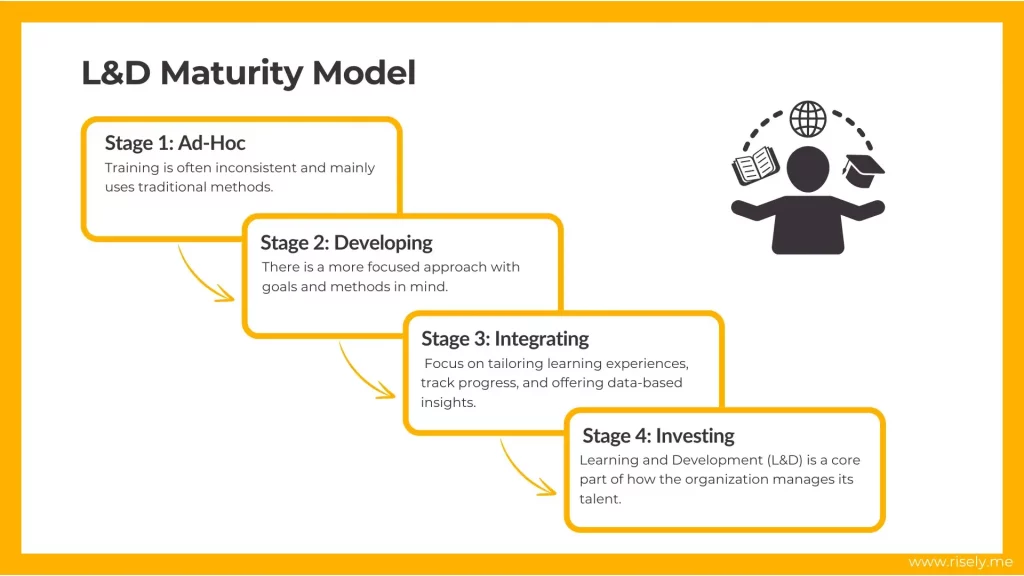
Stage 1: Ad-Hoc and Reactive Learning Approaches
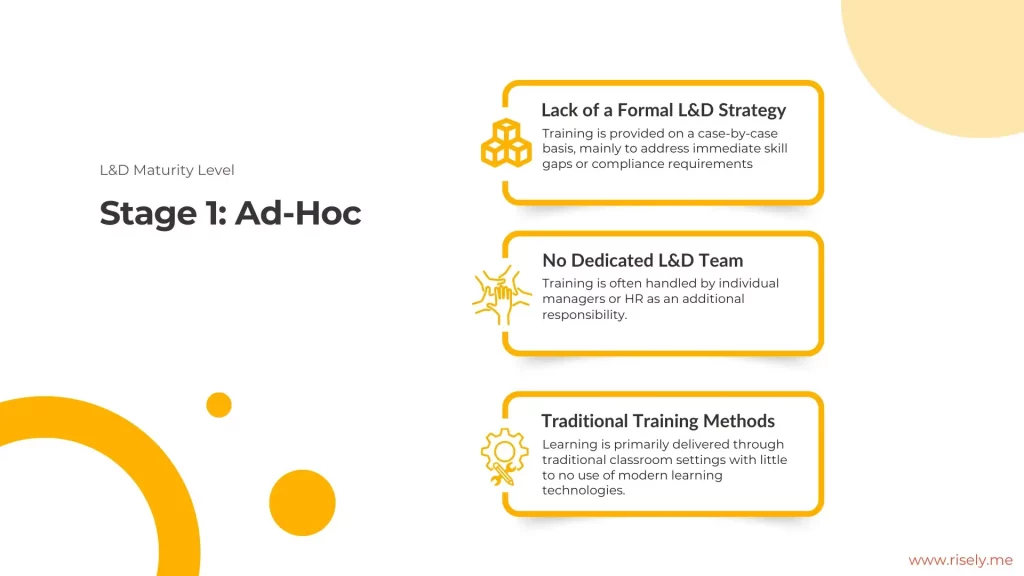
Stage 2: Developing Structured Learning Processes
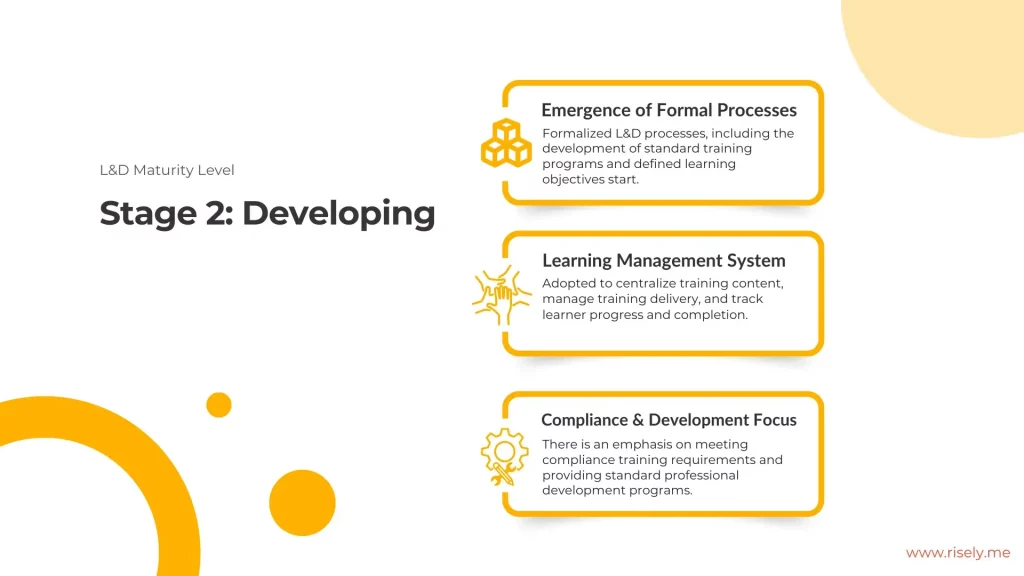
Stage 3: Integrating Learning with Business Strategy
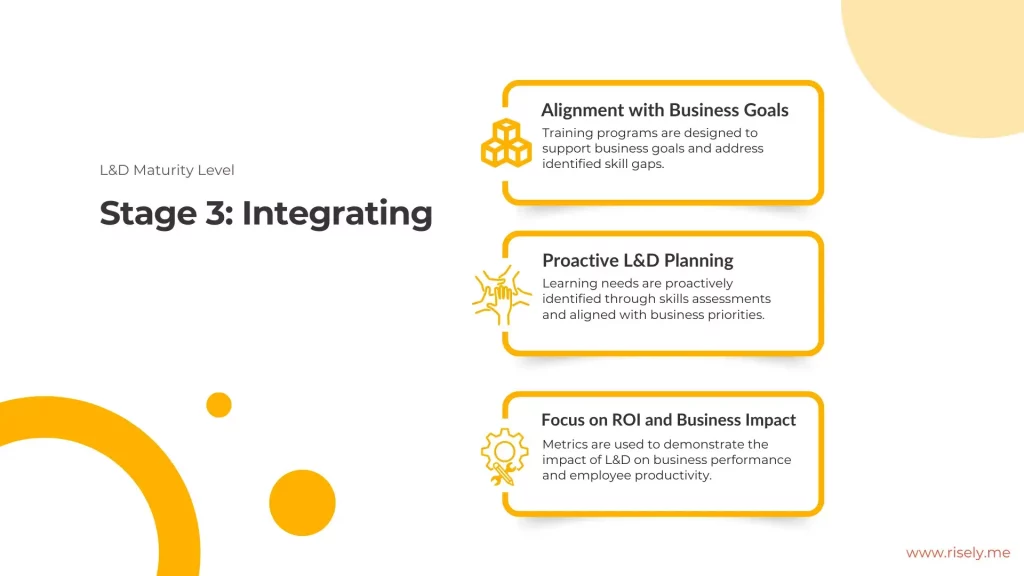
Stage 4: Investing in People Assets
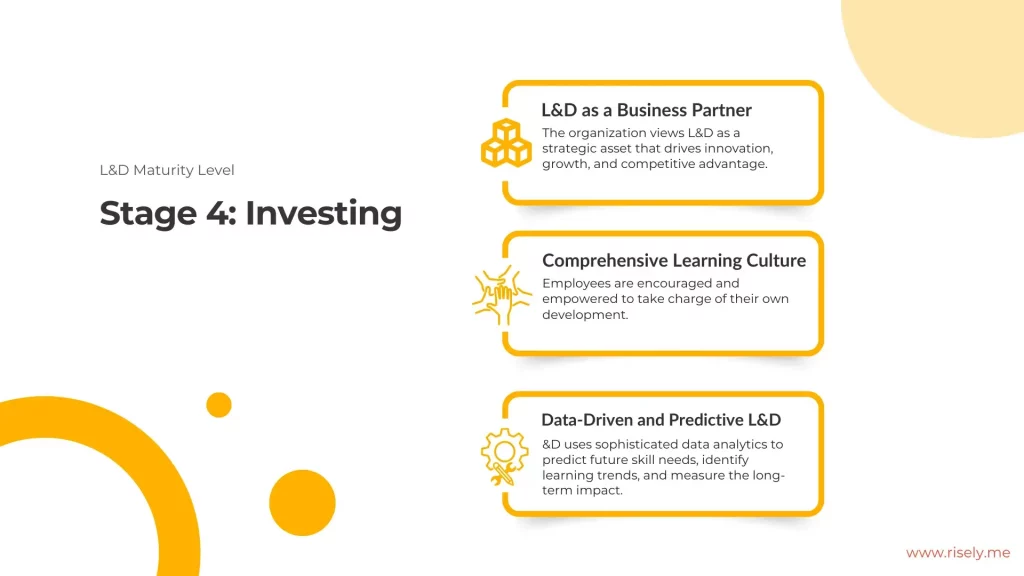
How to Advance Through L&D Maturity Levels?
Transitioning to higher levels of L&D maturity requires a smart and organized approach. Start by setting a clear L&D vision that aligns with business goals. Invest in new technology to update learning experiences. Also, use data to check and improve the effectiveness of your programs. But those are just the basics; there’s more that you can do to move up the organizational learning maturity ladder.#1 Adopt an active approach to L&D initiatives
Develop an L&D strategy that aligns with your business objectives and augments your approach to reaching them soon. Your L&D plan needs to be proactive, anticipating needs before they show up heavily on the organization’s face, and agile enough to cater to changing trends and demands of the industry and people.#2 Gain leadership support and commitment
Many L&D initiatives fail to see the light of day simply because the owners could not gain the trust and support of the leaders who could have given the programs a much-needed nudge toward acceptance. So what’s the way out? Focus on the first idea, i.e., making a business impact, and showcase it to the relevant leaders so that your work is not a vanity point but something valuable and gets the care it deserves. Read more: How to Obtain Buy-In for Training from Stakeholders?#3 Make some investments
L&D in the early stages, lacking maturity, is also characterized by a lack of investments in three major areas: time, effort, and assets. You will need to up all three before attempting to hit higher levels of learning maturity with your team.- You need to invest significant time in planning and preparing robust L&D infrastructure and processes, such as setting SMART goals and building learning materials.
- Second, you need to put effort into building the learning content, arranging experts, conducting assessments, etc., to have a more impactful learning process available.
- Third, all of this costs money, whether done in-house or externally. So, be prepared to pitch to the leaders with proof and estimates of the impact that learning brings to your organization.
#4 Leverage tech
Organizational learning is no longer limited to old-school coaches and lectures. Instead, it’s happening increasingly in the flow of work and not stealing precious work hours anymore. While most organizations limit themselves to an LMS, there are plenty more areas where tech can help you do more in corporate learning. For instance, Risely offers in-built skill assessments on its platform for leadership development. We also have an integrated AI coach, Merlin, who meets coaching needs at the point of need in preferred languages and workspaces. Mature learning organizations ensure that they introduce L&D to more and more employees using tech in a standard format.To Wrap Up
In conclusion, using a Learning and Development Maturity Model can really improve how well your organization trains and develops its employees. Start by checking your current L&D maturity level. Then, find important areas to focus on and move through the different stages using best practices. This way, you can adjust your learning methods to fit your business goals. Use technology and data to help you, and learn from real-life examples. This will help your organization reach higher maturity levels. Also, remember that regular evaluation and support from leaders are key for ongoing growth in L&D maturity.Free Resource for You: Learning and Development Strategy Template
A complete framework by Risely to evaluate and re-energize your organization’s growth.
How to Create a Course with AI: A Guide for L&D Professionals
How to Create a Course with AI: A Guide for L&D Professionals According to a McKinsey survey(1), only 11% of…
How to build a Learning and Development Action Plan ft Katie Greenwood
How to build a Learning and Development Action Plan ft Katie Greenwood Does your company’s Learning and Development (L&D) strategy…
Generative AI for Learning and Development: Getting Started
Generative AI for Learning and Development: Getting Started In 2024, organizations spent $401 billion globally on corporate training(1), yet 70%…
Future proofing a learning strategy for organizations with Inna Horvath
Future Proofing a Learning Strategy for Organizations with Inna Horvath With the advent of AI, everyone’s anticipating changes. L&D leaders…
What is Immersive Learning? A New Era in Education
In this blog, you’ll learn what is immersive learning and how it is changing training, increasing engagement, and influencing the…


